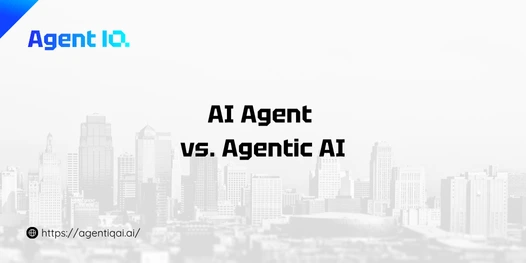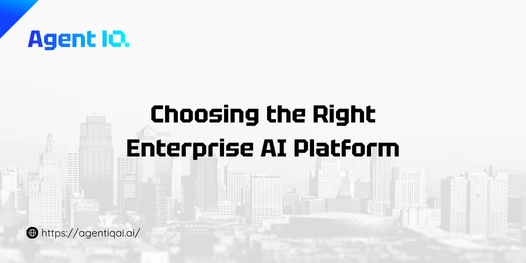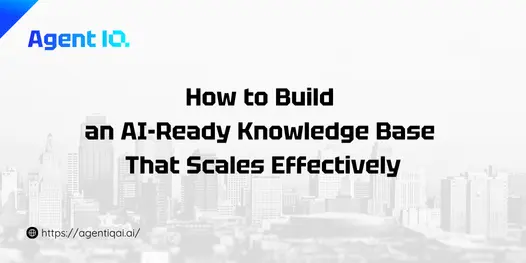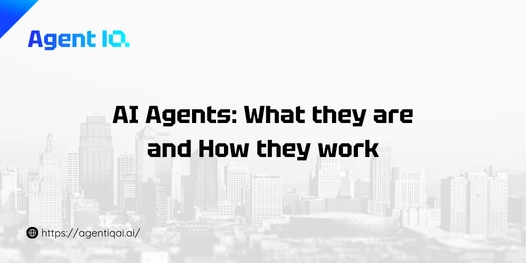What are Large Language Models (LLMs)?
- Publised October, 2025
Explores how Large Language Models (LLMs) are reshaping AI, enabling intelligent content creation and transforming industries. Discover their core functions, foundational elements, and immense potential.
Table of Contents
Toggle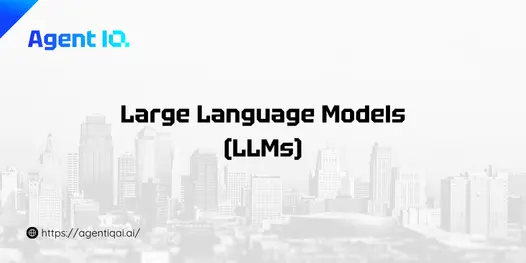
Key Takeaways
- LLMs are deep learning models that understand, generate, and process human-like text.
- They leverage neural network architectures and vast datasets to perform various NLP tasks.
- LLMs are transforming industries through applications like content generation, conversational AI, and data analysis.
What are Large Language Models (LLMs)?
Large Language Models (LLMs) are deep learning algorithms trained on massive amounts of data, giving them the ability to recognize, summarize, translate, predict and generate content. These models are engineered for complex NLP tasks, with a strong emphasis on language generation, making them crucial for understanding and producing human-like text. The term “large” refers to the scale of training data and parameters, enabling LLMs to produce coherent, contextually relevant, and human-like text.
- Scale: LLMs use vastly larger training datasets and parameter counts, enabling complex pattern recognition.
- Generalization & Versatility: LLMs adapt to diverse tasks with minimal fine-tuning.
- Contextual Understanding: Transformer architectures provide a deeper, more nuanced understanding of context.
- Generative Power: LLMs create novel, coherent, and fluent text.
- Self-supervised Learning: LLMs learn from unlabeled data, reducing the need for extensive labeled datasets.
How do LLMs work?
LLMs operate as sophisticated statistical prediction machines, learning patterns from vast text to predict the next word in a sequence. This functionality relies on architectural components and a multi-stage training process.
Core Architecture (e.g., Transformers)
The Transformer architecture, introduced in 2017, forms the backbone of most modern LLMs. It revolutionized NLP by allowing parallel processing of word sequences, significantly reducing training time compared to Recurrent Neural Networks (RNNs). With its encoder-decoder structure, the Transformer efficiently handles sequential data, identifying complex patterns and relationships within text.
Training Data and Process
Training LLMs involves two critical phases, utilizing immense and diverse datasets from sources like books, articles, websites and code:
- Pre-training: The initial, large-scale phase imbues the model with a broad understanding of language, grammar, facts, and context. Self-supervised learning enables the model to learn patterns from unlabeled data by predicting the next word or filling in masked words.
- Fine-tuning: Adapts the pre-trained LLM for specific tasks using smaller, labeled datasets. Instruction tuning aligns the model with human instructions.
Data quality is crucial for effective learning and bias reduction.
Parameters and Scale
Parameters are internal configuration variables that govern how the model processes data and makes predictions. LLMs contain billions, sometimes trillions, of parameters, like GPT-3 with 175 billion. A higher number of parameters generally correlates with increased capabilities, allowing LLMs to learn intricate patterns and generalize across tasks more effectively.
Key Mechanisms (e.g., Tokenization, Embeddings, Self-Attention)
LLMs employ several key mechanisms to process and generate text:
- Tokenization: Input text is broken down into smaller units (tokens) to standardize input.
- Embeddings: Tokens are converted into multi-dimensional numerical representations (vector embeddings) that capture their semantic and syntactic meaning. Positional encoding preserves word order.
- Self-Attention Mechanism: The model weighs the importance of different tokens in a sequence relative to each other, understanding contextual relationships.
- Inference: The trained model predicts the most likely next token, building the output one piece at a time.
Key Characteristics of LLMs
LLMs possess defining traits that underscore their transformative potential. Their ability to adapt and perform complex tasks sets them apart.
Generative Abilities
LLMs create novel, coherent, and fluent human-like text across various forms, including articles, emails, code, marketing copy, and poetry. They adapt to different writing styles, tones, and formats, demonstrating creativity beyond mere regurgitation.
Versatility and Adaptability
LLMs exhibit broad applicability across a wide spectrum of NLP tasks, such as summarization, translation, Q&A, sentiment analysis, and reasoning. They generalize knowledge and perform diverse tasks with minimal specific supervision after initial pre-training. Prompt engineering allows users to guide their general-purpose capabilities for specific outcomes.
Scale and Complexity
The immense scale (billions to trillions of parameters) is a defining characteristic of LLMs. This scale enables them to learn intricate linguistic patterns, semantic relationships, and world knowledge from vast training data. Scale also contributes to emergent capabilities that are not directly programmed but arise from the model’s complexity.
Foundation Models and Multimodality
Many top-tier LLMs serve as “foundation models,” providing a base that can be adapted for various AI applications. The trend towards processing and generating various data types beyond text, including images, audio, and video, is also evolving. This enables richer, more integrated interactions and multimedia content generation.
Applications of LLMs in various fields
LLMs have a transformative impact across diverse industries and domains. Their ability to understand and generate language makes them invaluable tools for automation and innovation.
Content Generation
LLMs draft articles, blog posts, marketing copy, emails, social media updates, creative writing, and video scripts. They adapt to different styles and tones to streamline production.
Conversational AI (Chatbots, Virtual Assistants)
LLMs power advanced chatbots for customer support, instant responses, personalized recommendations, and 24/7 assistance. They understand complex user queries to deliver human-like interactions.
Language Translation and Localization
LLMs provide accurate and context-aware translations across numerous languages. They facilitate global business expansion by localizing content with cultural nuances.
Code Development and Assistance
LLMs assist developers with code completion, generate code snippets, refactor code, write unit tests, explain complex code, and translate between programming languages, accelerating software development.
Data Analysis and Summarization
LLMs efficiently process and condense lengthy documents into concise summaries. They extract actionable insights from large datasets, aiding in market research, financial analysis and customer feedback understanding.
Education and Research
LLMs personalize educational content, offer tutoring, generate practice questions, and provide tailored explanations. In research, they assist with hypothesis generation, experimental design and analyzing complex datasets.
Challenges and Limitations of LLMs
LLMs, despite their capabilities, have critical challenges and limitations that must be understood for responsible deployment. These issues impact reliability, fairness, and broader societal implications.
Hallucinations and Factual Inaccuracies
LLMs generate plausible-sounding but factually incorrect or nonsensical information (hallucinations). These stem from noisy/biased training data, architectural quirks, or decoding randomness. This necessitates rigorous fact-checking and safeguards.
Bias and Fairness
LLMs learn from human-generated data, inheriting and amplifying societal biases. This can lead to unfair, offensive, or discriminatory outputs in sensitive applications. Mitigation requires continuous efforts in diverse data curation and ethical AI guidelines.
Data Privacy and Security Concerns
Training on vast internet data may inadvertently include personal or sensitive information, raising privacy issues. LLMs can regenerate or infer private data, leading to breaches. Robust security measures and adherence to data protection regulations are critical.
Computational Costs and Environmental Impact
Training and operating LLMs require substantial computational power, memory, and energy. Training can cost millions of dollars, limiting accessibility, and energy consumption contributes to carbon emissions.
Lack of True Understanding and Reasoning
LLMs operate based on statistical patterns, not genuine human-like comprehension. They struggle with complex logical reasoning, multi-step problem-solving, common sense, and nuanced interpretations. Their knowledge is limited to their last training cutoff, and outputs can vary for the same input.
The Future of LLMs
The LLM market is rapidly evolving with projected significant growth. Key trends will shape their capabilities, applications, and integration into daily life.
Continued Advancements (e.g., Multimodality, Efficiency)
Enhanced Multimodality allows seamless processing of various data types. Computational efficiency focuses on “Green AI” with energy-efficient architectures, and improved memory includes greater long-term memory capabilities and Retrieval-Augmented Generation (RAG) systems.
Specialized and Smaller Models
The development of domain-specific LLMs tailored for industries like finance, healthcare, and legal, is providing higher accuracy and relevance. Smaller Language Models (SLMs) are optimized for on-device deployment, speed, and reduced computational resources, enabling privacy-sensitive applications.
Autonomous Agents
LLM-powered agents are capable of making decisions, interacting with tools, and taking actions with minimal human oversight. These agents automate complex workflows like scheduling meetings and managing tasks, significantly increasing productivity.
Ethical Development and Governance
Continued emphasis on safety, alignment, and mitigating biases is critical for responsible AI development. Implementation of robust security measures, guardrail models, and adherence to emerging regulatory frameworks are essential. Addressing intellectual property, accountability, and transparency is crucial as LLM capabilities expand.
FAQs
What is the primary function of an LLM?
LLMs are primarily designed to understand, process, and generate human-like text, performing tasks from answering questions and writing content to summarizing documents and translating languages.
Are LLMs truly intelligent or conscious?
No, LLMs are not intelligent or conscious in a human sense. They are sophisticated statistical prediction machines that identify patterns in data to generate responses, lacking genuine understanding, feelings, or real-world experience.
What are “hallucinations” in LLMs?
Hallucinations refer to instances where an LLM generates information that sounds plausible and confident but is factually incorrect, nonsensical, or entirely fabricated, not based on its training data or real-world facts.
Your Knowledge, Your Agents, Your Control



